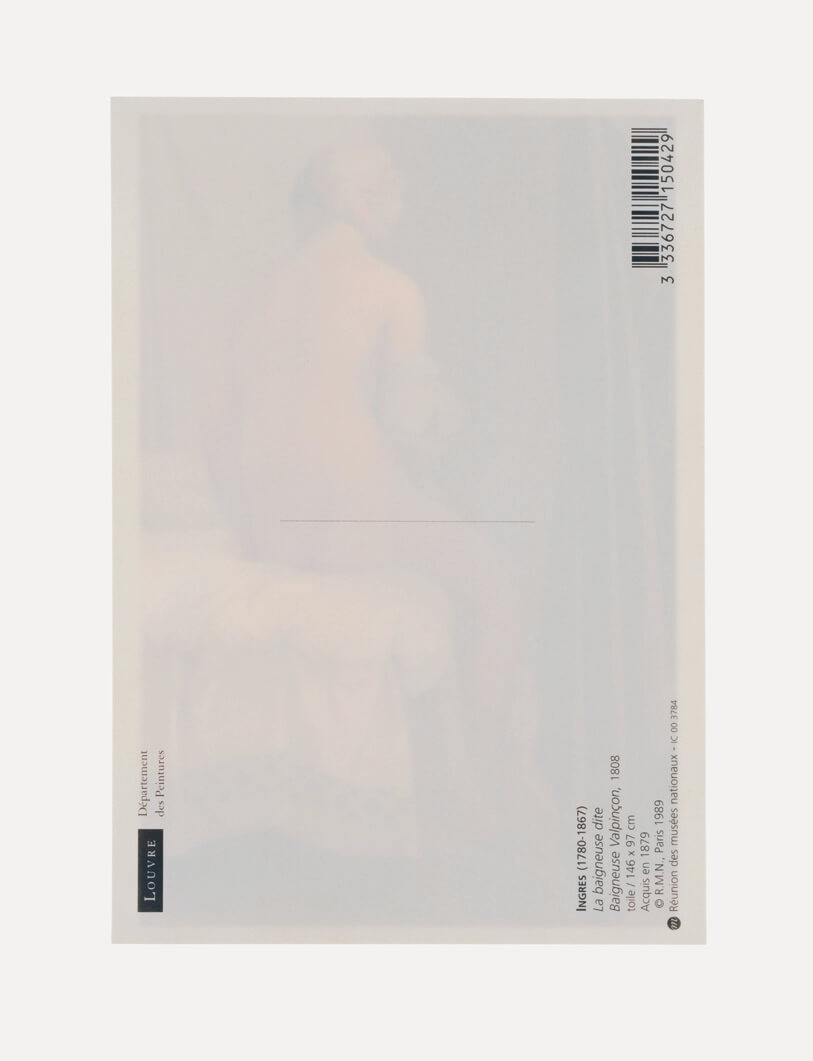Taking art historical masterpieces—and, by extension, art history itself—as her referents, Claudia Angelmaier traces the photographic representation of artworks across the pages of textbooks, classroom slides, coffee-table monographs, and postcards. Cognizant that major works are most often encountered via reproduction rather than in person, she highlights the analogue media that have facilitated the circulation of images for more than a century. Angelmaier’s attention to portable printed matter reflects an interest in the physical circulation of images at a moment when image sharing increasingly occurs digitally and in online social spaces.
For the series “Works on Paper” I collected art picture postcards showing rear-view figures, nude or seminude female figures depicted from behind. I photographed the printed versos of the postcards so that the front motif, the female figure, shown in mirror image, is only vaguely discernable. Through enlargement the figures appear in their original size. The spectator is thus confronted with an oversized version of the standardized postcard format. In my photograph “La Baigneuse Valpincon” (193 x 144,5 cm), the famous bather by Ingre is only faintly visible, resembles though the way a still latent image gradually appears on the surface of the photographic print in the developing tub. The contemplative viewing of that female figure is actually disrupted by the postcards typography, thus providing the picture’s meta-level: inventory numbers, copyrights or barcodes are assigned to an institutional and administrative or even commercial entity. So the context of the image is revealed whereas at the same time the identity of the female figures depicted remain concealed.
Claudia Angelmaier

